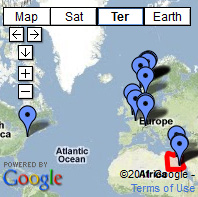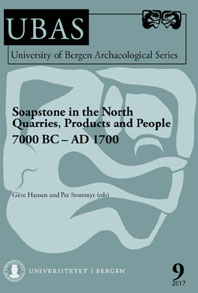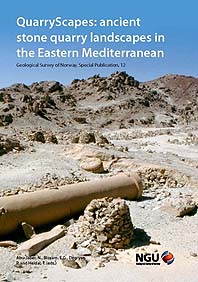With nearly 30 years of experience across Europe, in Egypt and elsewhere, I work as a generalist in geoarchaeology and conservation science – in the study of old monuments, quarries, rock art and lime mortar technology. My work is research-based, and I closely follow the latest trends (and discoveries) relevant to the services I offer. From 2019 all my domestic (Norwegian) services are undertaken through FABRICA, a company I have established together with colleagues. International services, and some research activities, are managed through my own company.
Lime mortars and traditional lime burning
I started to work with traditional lime burning in 2016. Together with colleagues I have designed and built four kilns for experimental work and for production of lime aimed at conservation of historic stone buildings. Also, I work on characterizing lime mortars made from lime burnt in these kilns, as well as mortars from historic buildings. My services are:
- Aiding the design and building of small-scale, traditional lime kilns.
- Selection of raw materials and burning lime
- Characterization of lime mortars, especially by thin-section polarizing microscopy
Old quarries
Though most of my experience is related to medieval Norwegian and Ancient Egyptian quarries, I have worked with anything from prehistoric chert quarries to recent soapstone quarries. Many aspects of quarries are universal: You have to organise the work, employ a decent extraction method, carve the blocks to preforms or final objects and transport them to where they ought to be used. Then there are the great differences – all dependent on archaeological and historical context. My services are:
- Field survey and mapping including quarry layout and extraction marks, traces of logistics and archaeological context. I carry out independent survey or accompany archaeological excavations with a view to enhancing their outcome. Satellite images, aerial photos and LIDAR data are often used as an aid in such investigations. I use Quantum GIS (QGIS) for building databases and map-making.
- Studies of available historic documents such as maps, images and texts as an aid in understanding quarry development.
- Provenance studies of stone by means of petrography – where was the stone used? I carry out more advanced provenance investigation (e.g. trace elements, isotopes) in cooperation with long-standing expert partners.
- Planning of quarry site conservation with a view to archaeological context and landscape, in cooperation with heritage authorities.
- Experiments on ancient quarrying methods – tools and techniques. Such experiments are undertaken within archaeological or other projects and ideally in cooperation with crafts people. This is a new service offered.
In my research I use results from projects undertaken for clients (if possible, and with permission) and independent studies. I’m particularly interested in the historic development of local and regional quarry landscapes with long traditions, and I also work on organisation of quarrying, as well as on extraction methods.
Monuments
The monuments I work at are those built from stone, in particular churches, monasteries and cathedrals, their ruined counterparts – and decoration such as sculpture and murals. My services revolve around what is necessary to know before conservation and maintenance can begin. Main services are:
- Building archaeology, in particular related to masonry building techniques, elucidating building and restoration phases, as well as stone provenance.
- Weathering studies and risk analysis; the latter as a prerequisite for sound conservation.
- Accompanying material analyses.
- Planning of conservation programmes.
Work usually starts with survey and mapping, as well as investigation of historic documents (images, photos, text) to get a grip on changes that have taken place over time. Understanding of weathering rates, as well as risk analysis, greatly benefit from knowledge of what happened in the past. From a research perspective, I’m particularly interested in what I like to call “weathering history”. The past may hold great secrets and what we may perceive as “bad” weathering and decay today could have happened a long time ago – or yesterday…
Please see this PDF for a more detailed impression of the work methods I use at monuments.
Rock art
My services related to rock art are quite similar to what I offer at monuments:
- Weathering studies and risk analysis.
- Accompanying material analyses.
- Planning of conservation programmes.
I also offer survey and mapping of rock art sites, but generally in a research context and particularly in Egypt, from where I have most of my rock art experience. In Egypt I’m also involved in larger, regional studies with the aim of placing rock art sites in an archaeological landscape context.
Other
At times, I also take an interest in other archaeological work, usually in some way related to stone. Over the years I have, for example, studied the distribution of ancient, stone-built hunting structures in Lower Nubia and Upper Egypt, Roman roads in Egypt – an generally anything that is connected to the production, transportation and use of stone.
See also these pages: About, Clients & Partners, New projects, Publications, Reports










Pingback: Tjenester for kulturminnevernet: Hva gjør en geoarkeolog for steinbygninger, steinbrudd og bergkunst? | Per Storemyr Archaeology & Conservation